6 Must-Haves for Your C-Section Recovery Kit
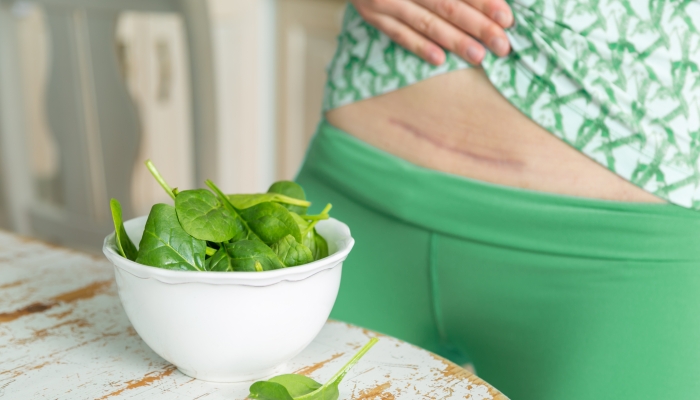
This post may contain affiliate links; please see our terms of use for details.
- A c-section requires a longer recovery in the hospital than a vaginal birth.
- Pain control and avoiding surgical complications are important for c-section recovery.
- You will need supportive clothing and underwear for about 6 weeks postpartum.
- You will still experience vaginal bleeding after a c-section and will need good pads.
- Pain medication and stool softeners are c-section recovery must haves.
A c-section delivery is a major surgery. Postpartum recovery is a little bit more complicated after a c-section. They are also life-saving for many c-section mamas and their babies.
C-sections require more anesthesia, and put you at higher risk for infections than vaginal births. You must also take care of the incision site and be careful not to strain your abdominal muscles for several weeks after surgery.
You may plan a c-section in advance due to baby position, previous c-section, cord and placenta issues, or a chronic health condition.
Giving birth by c-section may also come as a surprise. A birth plan often has to change due to emergencies, and your care team can help guide you in making that decision.
Either way, you should be aware that a c-section recovery is different from recovery for a vaginal delivery. Planning ahead and understanding what you will need for a c-section can help make your healing process go more smoothly.
6 must-haves for your c-section recovery kit include; pain medication, stool softeners, supportive underwear, comfortable clothing, abdominal binders, and heavy pads.
Must-Have Medications
Just like any other major surgery, you will probably have some pain at the incision site. Most mothers report that this pain is manageable and subsides within about a week. It is also completely normal to continue having contractions for a few days after delivery. These are similar to menstrual cramps and happen with both vaginal and c-section births.
Poorly controlled pain is associated with postpartum depression and lower breastfeeding rates. The Cleveland Clinic has studied the best medication to use for postpartum pain control.
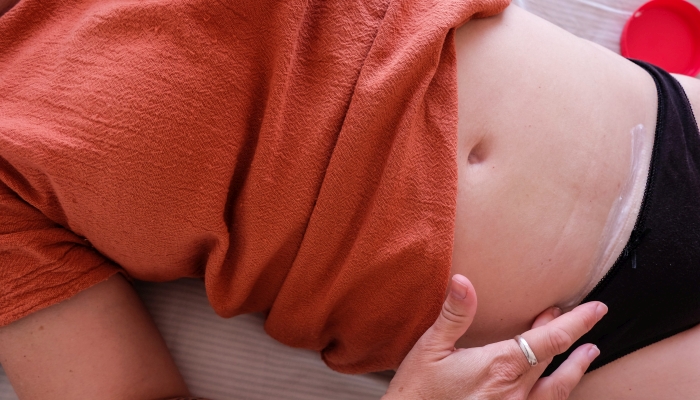
Pain-relievers after a c-section
You may receive opioid painkillers for the first few hours after your c-section. Percocet is the most common opioid given after surgeries, but most providers will have you switch to over-the-counter medication before you leave the hospital.
Opioid prescriptions are much less common today than they were 15 or 20 years ago. Many studies have found that alternating acetaminophen and ibuprofen works just as well as opioids for pain control, without the side effects.
Opioid side effects include:
- Drowsiness
- Nausea
- Constipation
- Slower recovery
- Respiratory depression
Acetaminophen and ibuprofen are nursing friendly medications. These are a must-have for your c-section recovery kit. If you can, try to treat your pain with Tylenol or Motrin before using an opioid. You can safely alternate between Tylenol and Motrin about every three hours for pain control.
You might also try an ice pack for incision pain or a heat pack for cramps. Holding a pillow over your incision when you need to cough or laugh will also help.
If you feel like your pain is not controlled with over the counter medication, talk to your delivery nurse to see what tips and tricks she might have.
- DUAL GEL ICE PACKS – These reusable ice packs offer hot and cold therapeutic support to help relieve pain and inflammation in stiff, aching joints and sore muscles.
- RELIEVE PAIN, SWELLING AND INFLAMMATION – Our ice pack help relieve myofascial pain and localized soft tissue soreness. It can be heated up in a microwave or frozen in the freezer to let you customize your overall recovery.
- ENHANCED FULL-BODY SUPPORT – The smarter, more flexible ice bag design with adjustable straps allow you to use it on your knees, lower back, elbows, shoulders, and other areas for fast, supportive relief. These are perfect Knee ice pack, ice pack for back, cold pack for neck, shoulders etc.
- REUSABLE HOT AND COLD COMPRESS – From menstrual cramps to migraines to aging muscles after a tough workout our body and shoulder ice packs are soft to the touch and fit men, women, and youth equally.
Stool softeners after a c-section
Stool softener is a must for a smooth recovery. Whether you have a natural birth, assisted vaginal birth, or cesarean section, you will need a stool softener.
Colace is the best choice for c-section mamas. Colace draws water into the stool to make it easier to pass. This is important because you’ll want to avoid straining for a few weeks after delivery.
You’ll need a stool softener even more if you use any opioid medication during or right after giving birth. This includes medications used during a c-section.
Opioids cause constipation. If you use them for pain control, make sure you are taking some kind of stool softener, walking often, and drinking plenty of water. This will keep you from becoming backed up.
Other medications to promote recovery
Continuing with a prenatal vitamin after giving birth can help keep you healthy. This is especially true if you are breastfeeding.
You might also consider taking a probiotic, fish oil, and vitamin D supplement. These can help you in your recovery.
Medications and breastfeeding
Many medications cross from you to your baby through breastmilk. Always consult your care team before taking medication during breastfeeding.
Acetaminophen and ibuprofen are both considered safe for nursing mothers and their babies.
- HIGH QUALITY & HEALTHY:Forget about those ugly and uncomfortable panties,panties with 95% high quality combed cotton and double-layer cotton crotch can make you feel surprisingly comfortable and breathable,they contain 5%spandex which is just enough to feel comfortable but not at all pinching, binding or tight. ,colors won’t fade.they will not rolled down or crawled up in the back.comfortable and healthy are two of the most important Features of these panties.
- ESSENTIAL FOR MOTHERS:If you just had a c-section or hysterectomy,these panties can help you get by during those tough times,They rise way above the incision cover your belly button(never roll down),and offer compression to hold a thick bandage in place to protect your incision.they are also suitable for the person who are Suffering Low Back Pain or Sedentary in Office,they can reduce your pain after a whole day’s working.
- ESSENTIAL FOR BEAUTY:High waist cotton soft breathable panties,If you have a“pooch”and want to wear a nice dress,these panties are definitely a good choice for you,they can help you slim down .these panties are also good at smoothing lines,they cover all of the stomach curves in the right places giving you a slimmer look.make you more confident without muffin top,our panties can also lift your butt at the same time.
- SUITABLE SIZE:We know size is a big issue,so we’ve measured each size from Original length to its full stretch.you can refer to the size chart for the detailed information.
Must-Have Supportive Underwear
Having underwear that can provide support is a game changer for c-section patients. You will want to pack some supportive underwear in your hospital bag. High waisted underwear will give you support and keep you comfortable.
While you lay in the hospital bed, your delivery nurse will give you disposable mesh underwear. These are convenient because it’s easy for the nurse to move them to check your incision site and look for blood clots.
At the end of your hospital stay, you will want to trade the mesh undies for something more supportive.
What to look for in postpartum underwear
There are many brands of postpartum underwear available online and in store. Wherever you choose to shop, you’ll want to choose underwear that meets the following criteria:
- High waisted
- Stretchy
- Moisture-wicking
- Wide enough for a pad
- Comfortable
Try to find underwear that you don’t mind throwing out after your c-section recovery (they even make disposable postpartum underwear). Chances are there will be a lot of blood on your underwear, especially during the first week.
- POSTPARTUM UNDERWEAR: Seamless, full-coverage and abdominal support. Designed to stretch more than you have.
- MESH-FREE MICROFIBER + SPANDEX MATERIAL: Super soft, breathable, latex-free versus the see-through, fishnet-like hospital version that rolls down.
- AVAILABLE IN 2 SIZES: Size Regular (waist 28″-42″ stretched). Size Petite (waist 23″-34″ Stretched).
- WHAT’S INCLUDED: 8 boyshort cut disposable underwear.
Must-Have Clothing
Many moms spend a lot of time finding the perfect outfit for their new baby to come home in. Often, they forget about themselves. Choosing the right clothing for yourself is just as important as choosing your new baby’s first swaddle.
Best clothes for post-op
Do not make the mistake of trying to wear your pre-pregnancy size clothing right after giving birth. You should choose loose fitting, comfortable clothing for at least the first few weeks of your recovery.
Look for clothing that doesn’t rub or put pressure on your incision site. Loose clothing that allows air flow to the incision area can help with the healing process. You do not want any clothes to be tight on your c-section incision.
You will also want to find nursing-friendly clothing to wear. Clothing that can easily unsnap or open when you need to feed your baby makes the start of your parenting journey just a little bit easier.
- BUST SIZE: [S] (US:8)-36.61″ [M] (US:10-12)-38.58″ [L] (US: 14-16)-40.55″ [X-L] (US: 18)-43.50″ [XX-L] (US: 20)-46.46″
- STYLE:Long sleeve / Double layers / Buttons vneck with adjustable drawcord / Classic plaid design / Contrast color.
- PLAID: The unique plaid splicing contrast part makes the top more special and trendy. You could wear it at home or outside pairing with a scarf, cardigan or boots etc.
- MERITS:It has double layered flaps which enable mommies to nurse babies easily and discretely in public.
Must-Have Abdominal Binders
A belly binder should be used to provide support to the back and abdominal muscles after major abdominal surgery. You can use an abdominal binder for a few weeks postpartum.
An abdominal binder will not make your belly shrink or eliminate a noticeable scar. It is simply used to help support your muscles while you recover. Think of it like wearing an ankle brace after a minor sprain.
The Belly Bandit is an absolute favorite of many new moms. It should be worn while you are being active. GIve yourself breaks from wearing it while you are asleep or resting. You should be able to slide your fingers easily underneath the band. If you cannot take deep breaths with your belly binder on, it is too tight.
- POSTPARTUM RECOVERY SUPPORT: This postpartum belly band offers targeted support for your belly, waist, and hips. With the Power Compress Core, our post partum waist binder promote mobility, provide core muscle support and ease postpartum back pain
- CORE STRENGTHENING COMFORT: Our belly binder post partum strengthen core muscles weakened during pregnancy. This c section belly binder facilitates a quicker return to daily activities, while maintaining comfort and security
- CONFIDENT BREASTFEEDING: An abdominal binder postpartum that encourage better posture, crucial during breastfeeding, with 360 degrees of compression, our postpartum belly binder make you feel supported and confident throughout your postpartum journey
- LONG-TERM COMFORT ASSURANCE: Enjoy long-lasting effectiveness beyond the initial 6-10 weeks post-delivery, as many women find continued benefits from wearing our belly wrap postpartum, enhancing comfort and confidence
Must-Have Postpartum Pads
Your c-section recovery kit should include postpartum pads. Even though you did not deliver vaginally, you will still experience vaginal postpartum bleeding.
You will experience vaginal bleeding for four to six weeks after giving birth. For the first few days, you will have heavy bleeding. Clots about the size of a quarter are normal for the first week.
Postpartum pads need to be able to handle more blood than regular period pads. Look for specially made postpartum pads, or you can buy extra wide, extra long period pads. Especially at night, pads that are the wrong size will leak and have you changing clothing and sheets every few hours.
No products found.
Extra Items You Can Include in Your Kit
You may feel tired and weak for the first few weeks postpartum. For c-section mamas, the healing process takes a little bit longer. New parents need to take it easy during the early days of their parenting journey.
To make sure you have a smooth recovery, you should not lift more than ten pounds for about 6 weeks. Because your abdominal muscles are more vulnerable after a c-section, nursing pillows are a life saver.
Holding a feeding baby uses your arms, back, and stomach muscles. You’ll need to find a nursing friendly pillow or couch that will support you and your baby during nursing sessions.
- CREATED FOR COMFORT: Designed by a mom, this nursing pillow provides relief to your arms and back by lifting your baby to a more ergonomic position when breastfeeding, bottle feeding, and bonding
- YOU HAVE OPTIONS: C-shaped design allows for multiple feeding styles—cradle, cross cradle, football hold, bottle feeding
- EASY CARE, MACHINE WASHABLE: Machine washable and dryable because messes happen
- MORE COVERS AVAILABLE: Comes covered in a removable cover, and additional covers are sold separately so you can have backup on laundry day
FAQs
How long does it usually take to fully recover after a c-section?
You should feel back to normal around six weeks after your c-section.
Most moms stay in the hospital for three days after their c-section. You may need to see your doctor after about a week at home to get your stitches or staples out.
At your six week postpartum check-up, your doctor can help you determine whether or not you can resume all of your pre pregnancy activities.
Can I use tampons after a c-section?
You should not use tampons for six weeks after any type of delivery.
Your cervix will not close completely for about six weeks after delivery which means that tampons can cause discomfort and put you at high risk of infection.
Make sure you have a check up with your doctor before using tampons or menstrual cups.
When can I exercise after a c-section?
You can start walking right away after a c-section. Walking is a great way to speed up the healing process and prevent postpartum depression.
You should wait to do more strenuous exercises until after your six week check up. Depending on how well your incision area is healing, you should be able to exercise starting between six and twelve weeks after your delivery.
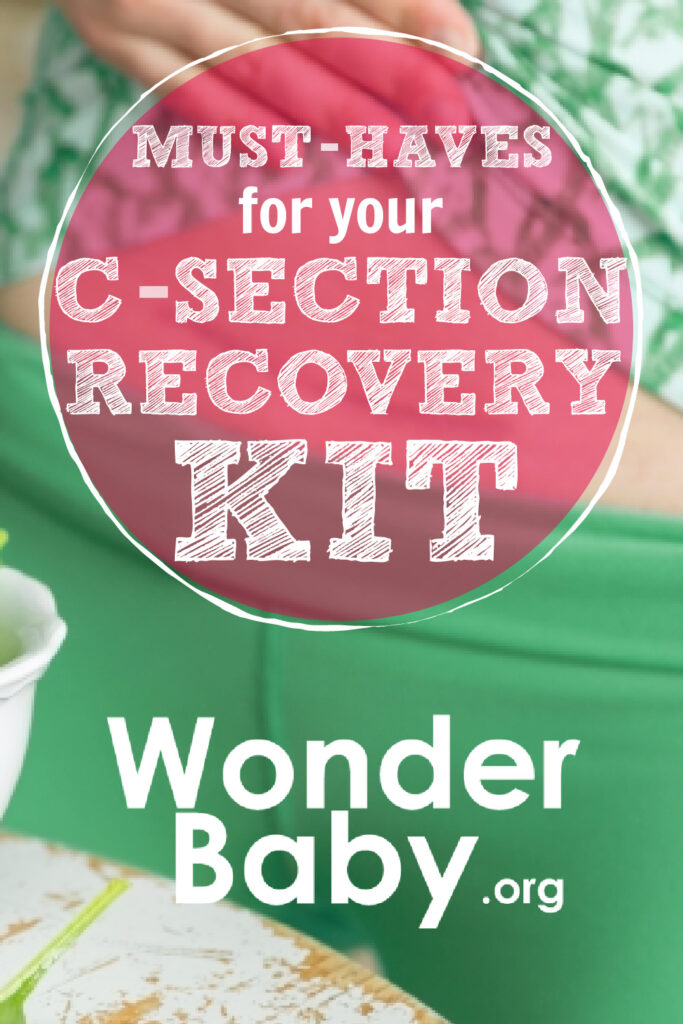
The information WonderBaby provides is not intended to be, and does not constitute, medical or other health advice or diagnosis and should not be used as such. Always consult with a qualified medical professional about your specific circumstances.
Related Posts
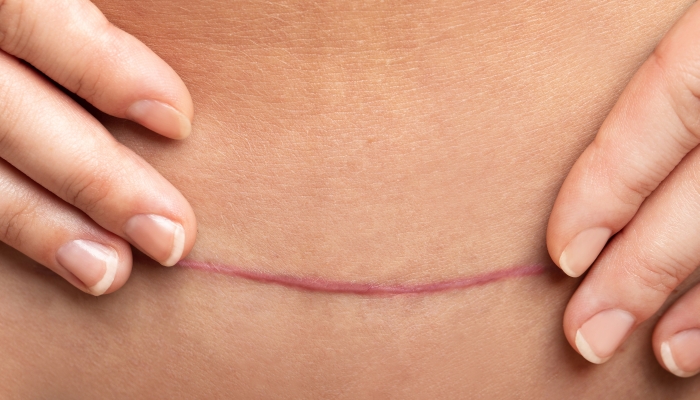
Pregnancy
How To Deal With an Ingrown Hair on a C-Section Scar
Ingrown hairs on a C-section scar can be treated using a warm compress or mild exfoliation. Infected ingrown hairs may require antibiotic treatment.
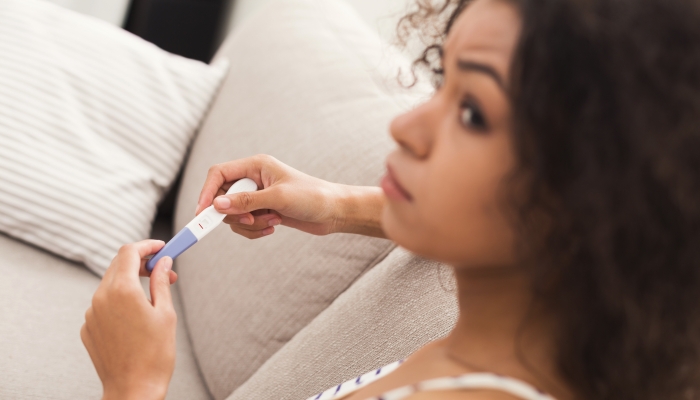
Pregnancy
What’s a Dye Stealer Pregnancy Test?
A dye stealer pregnancy test usually means that your hCG levels are very high, which is typically considered a good sign for pregnancy.
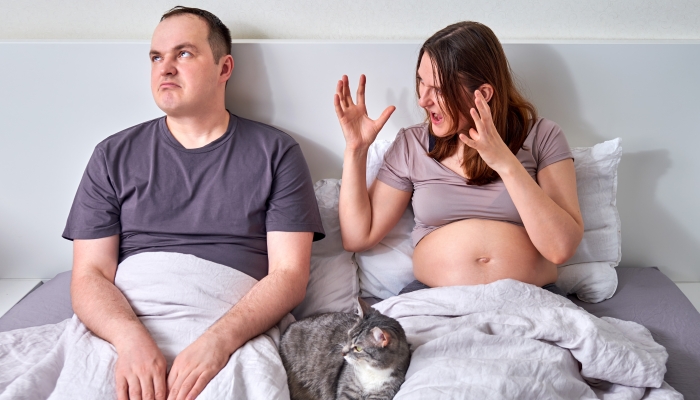
Pregnancy
Can Yelling Cause a Miscarriage?
Yelling alone can not cause a miscarriage. However, maternal stress can cause high blood pressure, preterm labor, and other health problems.





